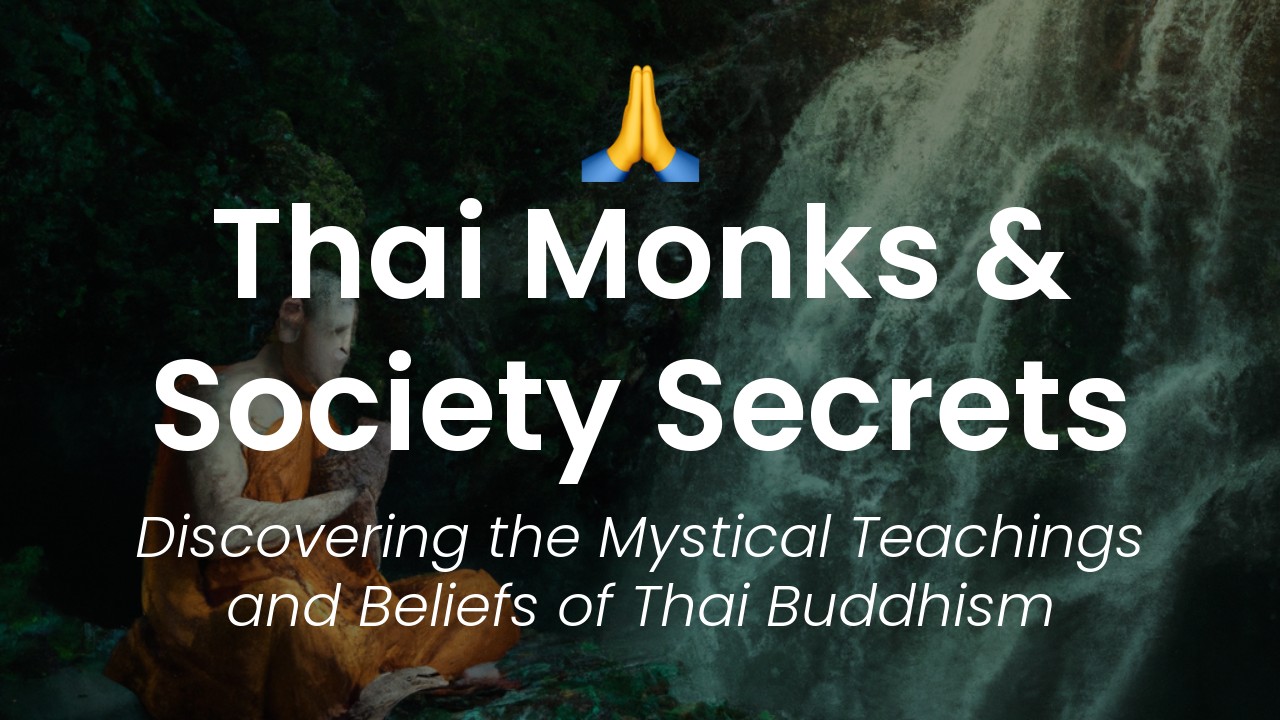As a cultural tourist, one of the best things about Thailand is the seemingly endless ways to explore its rich cultural heritage. From ancient temples to vibrant markets, from delectable street food to traditional dances, the Land of Smiles has it all. But have you ever considered delving deeper into the spiritual side of Thai culture, beyond the surface level tourist attractions? If so, then an exploration of the Four Noble Truths is a must-do activity on your cultural itinerary.
The Four Noble Truths are a central concept in Buddhist philosophy and are the foundation upon which Buddhism was built. These truths were first taught by the Buddha more than 2,500 years ago and remain relevant today. The Four Noble Truths are: the truth of suffering, the truth of the cause of suffering, the truth of the cessation of suffering, and the truth of the path leading to the cessation of suffering.
While these truths might sound a bit depressing at first glance, they are actually meant to lead to a life of peace, awareness, and understanding. By accepting the reality of suffering, we can learn to let go of negative and unrealistic expectations and find contentment and joy in the present moment. Additionally, understanding the Four Noble Truths can help cultivate empathy and compassion for others.
In this article, I will take you on a spiritual journey through Thailand to discover the Four Noble Truths. We will visit some of the country's most sacred temples, learn from insightful monks, and participate in silent meditation retreats. So, fasten your seatbelts, because we are about to embark on a transformative cultural adventure.
Overview of the Four Noble Truths
As a cultural tourist in Thailand, it's impossible to ignore the strong influence of Buddhism on the country's way of life. To truly understand and appreciate Thai culture, it's important to understand the teachings of Buddhism. One of the fundamental principles of Buddhism is the Four Noble Truths, which are the foundation of the Buddha's teachings.
The Four Noble Truths are:
- Dukkha (suffering)
- Samudaya (origin of suffering)
- Nirodha (cessation of suffering)
- Magga (path leading to the cessation of suffering)
These four truths outline the nature of suffering and the way to end it. In this article, we'll take a closer look at each of the Four Noble Truths and explore how they are expressed in Thai culture.
The Importance of Buddhism in Thailand
Buddhism is deeply ingrained in Thai culture and way of life. Over 90% of the country's population practices Theravada Buddhism, which is the oldest surviving branch of Buddhism. The influence of Buddhism can be seen in everything from daily rituals and customs to grand, elaborate temples. Many Thais believe that following the teachings of Buddhism is the key to living a happy and fulfilling life.
Wat Phra Kaew and the Emerald Buddha
Perhaps the most famous example of Buddhist influence in Thailand is the Wat Phra Kaew temple complex in Bangkok. This temple is home to the Emerald Buddha, which is one of the most revered images of Buddha in Thailand. The Emerald Buddha is made of green jade and is only 66 centimeters tall, but it has a huge significance in Thai culture.
The temple complex is located within the Grand Palace complex, and visitors can marvel at the intricate details of the temple's decoration and architecture. Wat Phra Kaew is also home to several other important Buddhist structures, including the Phra Mondop, which houses important scripture.
Wat Pho and the Reclining Buddha
Another important temple in Bangkok is Wat Pho, which is home to the impressive Reclining Buddha. This statue is 46 meters long and 15 meters high, making it one of the largest Buddha images in Thailand.
Wat Pho is also known as the birthplace of traditional Thai massage, and visitors can experience the therapeutic benefits of this ancient practice at the on-site massage school. The temple also has a school for traditional medicine and pharmacy.
Wat Arun and the Temple of Dawn
Located on the west bank of the Chao Phraya River, Wat Arun is one of Bangkok's most iconic landmarks. The temple's full name is Wat Arun Ratchawararam Ratchawaramahawihan, which is a mouthful even for native Thai speakers!
Wat Arun is known for its distinctive prangs (towers), which are decorated with intricate details made of colorful Chinese porcelain and seashells. As the name suggests, Wat Arun is particularly beautiful at dawn when the first rays of the sun illuminate the temple's colorful façade.
How to Incorporate the Four Noble Truths into Your Trip
If you're interested in learning more about Buddhism and the Four Noble Truths during your trip to Thailand, there are several ways to do so. Visiting temples is an obvious starting point, but you can also attend meditation retreats, participate in alms-giving ceremonies, and even volunteer at monasteries.
Another way to gain insight into Buddhist philosophy is to talk to locals. Many Thais are proud of their country's religious heritage and are happy to share their knowledge with visitors. There are also many books and resources available on Thai Buddhism if you want to do some self-study.
Conclusion and Final Thoughts
Exploring the Four Noble Truths and the influence of Buddhism in Thailand is a rewarding experience that can deepen your understanding of Thai culture. Whether you're a devout Buddhist or simply a curious traveler, taking the time to learn about these fundamental teachings is sure to enrich your trip and leave a lasting impression. So why not take a break from the beaches and shopping malls and embark on a cultural journey that's both enlightening and inspiring?







